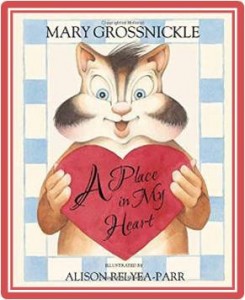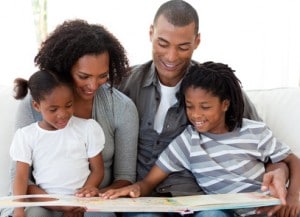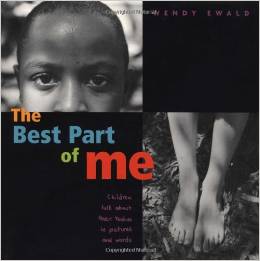 As an adoptive parent and now as an adoption coach, I search for books that support adopted children and help them learn how adoption influences their lives. Many books have been written on the subject. How does a family identify the best books– especially those that address adoption from the child’s point of view.
As an adoptive parent and now as an adoption coach, I search for books that support adopted children and help them learn how adoption influences their lives. Many books have been written on the subject. How does a family identify the best books– especially those that address adoption from the child’s point of view.
Mary Grossnickle’s sweet story, “A Place in My Heart, is one great example of a story that validates the adopted child’s point of view. Charlie–a chipmunk adopted into a family of squirrels wrestles with the differences in their appearance. Adoptees commonly feel like they don’t quite fit so they will easily identify with Charlie’s struggle. He’s an endearing character, full of mischief and curiosity. His mother recognizes the stress factors that challenge Charlie and she responds in a supportive and adoption-attuned manner. Parents also can identify with Charlie’s desire to be reassured that he holds a special spot in the hearts of those he loves. We all share this need for connection. This is especially true for adopted children which is why kids will respond to Charlie’s situation.
Mommy overtly acknowledges and encourages his thoughts and feelings for his birth parents. This helps helps Charlie to work through them. Charlie learns that he doesn’t need to hide or deny his feelings. Charlie doesn’t have to choose one over the other; he doesn’t have to worry about being disloyal or hurtful to his adoptive parents. Their hearts are large enough to hold all of the people Charlie loves and all of the people who love Charlie. Mom designs a craft project so Charlie can own the important people in his life and place them in his heart. Together they realize that there is always room for loving relationships.
I thoroughly enjoyed this story and in the important message of understanding acceptance and validation that it conveys. Alison Relyea-Parr’s pastel illustrations have a gentle, dream-like quality that reinforce the comforting tone of the book. Readers will want to duplicate the “Place in my heart” activity. Jessica Kingsley Publishers has presented us with another excellent book.







